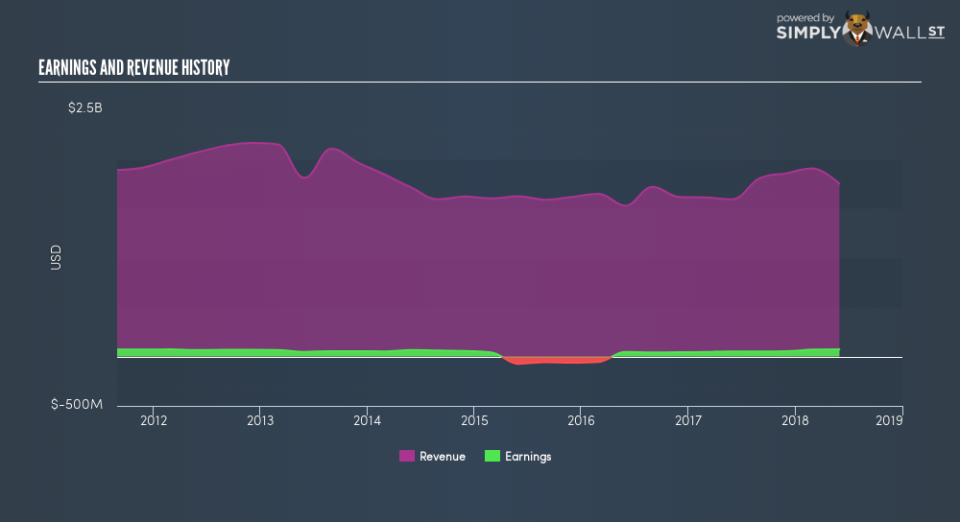What You Must Know About AAR Corp’s (NYSE:AIR) Market Risks

If you own shares in AAR Corp (NYSE:AIR) then it’s worth thinking about how it contributes to the volatility of your portfolio, overall. In finance, Beta is a measure of volatility. Modern finance theory considers volatility to be a measure of risk, and there are two main types of price volatility. First, we have company specific volatility, which is the price gyrations of an individual stock. Holding at least 8 stocks can reduce this kind of risk across a portfolio. The other type, which cannot be diversified away, is the volatility of the entire market. Every stock in the market is exposed to this volatility, which is linked to the fact that stocks prices are correlated in an efficient market.
Some stocks mimic the volatility of the market quite closely, while others demonstrate muted, exagerrated or uncorrelated price movements. Beta can be a useful tool to understand how much a stock is influenced by market risk (volatility). However, Warren Buffett said ‘volatility is far from synonymous with risk’ in his 2014 letter to investors. So, while useful, beta is not the only metric to consider. To use beta as an investor, you must first understand that the overall market has a beta of one. A stock with a beta greater than one is more sensitive to broader market movements than a stock with a beta of less than one.
See our latest analysis for AAR
What we can learn from AIR’s beta value
Zooming in on AAR, we see it has a five year beta of 1.2. This is above 1, so historically its share price has been influenced by the broader volatility of the stock market the market. If this beta value holds true in the future, AAR shares are likely to rise more than the market when the market is going up, but fall faster when the market is going down. Beta is worth considering, but it’s also important to consider whether AAR is growing earnings and revenue. You can take a look for yourself, below.
Does AIR’s size influence the expected beta?
With a market capitalisation of US$1.58b, AAR is a small cap stock. However, it is big enough to catch the attention of professional investors. It’s not particularly surprising that it has a higher beta than the overall market. That’s because it takes less money to influence the share price of a smaller company, than a bigger company.
What this means for you:
Since AAR has a reasonably high beta, it’s worth considering why it is so heavily influenced by broader market sentiment. For example, it might be a high growth stock or have a lot of operating leverage in its business model. This article aims to educate investors about beta values, but it’s well worth looking at important company-specific fundamentals such as AAR’s financial health and performance track record. I highly recommend you dive deeper by considering the following:
Future Outlook: What are well-informed industry analysts predicting for AIR’s future growth? Take a look at our free research report of analyst consensus for AIR’s outlook.
Past Track Record: Has AIR been consistently performing well irrespective of the ups and downs in the market? Go into more detail in the past performance analysis and take a look at the free visual representations of AIR’s historicals for more clarity.
Other Interesting Stocks: It’s worth checking to see how AIR measures up against other companies on valuation. You could start with this free list of prospective options.
To help readers see past the short term volatility of the financial market, we aim to bring you a long-term focused research analysis purely driven by fundamental data. Note that our analysis does not factor in the latest price-sensitive company announcements.
The author is an independent contributor and at the time of publication had no position in the stocks mentioned. For errors that warrant correction please contact the editor at editorial-team@simplywallst.com.

